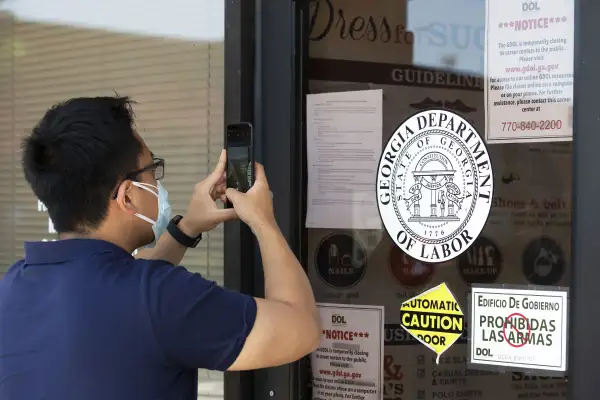New Stimulus Bill: Unemployment Benefits Are Getting a $300 Boost

Just a week and a half after the U.S. Bureau of Labor Statistics announced that another 885,000 people filed for first-time unemployment benefits during the second week of December, the highest number of weekly claims in three months, President Trump finally signed a stimulus package on Sunday evening that provides some necessary relief to struggling Americans.
Financial assistance to those who are currently unemployed was one of the priorities for the package. From the end of March through July 31, as joblessness rose to a peak of 14.7%, the CARES Act provided those receiving unemployment insurance with an additional $600 per week. Since the bonus payments expired, millions of unemployed Americans saw their weekly payments plummet, sometimes to unsustainable levels.
Here are some key questions answered on what the agreement may, or may not, provide to the unemployed:
How much money will new extended unemployment benefits provide?
The new stimulus bill is set to include $300 weekly supplements to state unemployment benefits, which is half the amount provided by the CARES Act. In a state like Massachusetts, which has the highest unemployment insurance payments in the country, this means the maximum benefits for unemployed workers could rise from $855 to $1,155 each week. In Arizona, the state with the lowest weekly unemployment benefits, the maximum weekly payment could total $540, up from $240.
The new supplement will also be available for workers who have historically been left without coverage, including those who are self-employed, contractors, and freelancers. These worker categories are covered through the Pandemic Unemployment Assistance program, which has also been extended into 2021.
How long will the new payments last?
In a bipartisan plan released by Senate and House leaders last week, lawmakers originally called for 16 weeks of coverage. However, that time period was reduced to 11 weeks during negotiations. According to the Washington Post, the cut was driven by the desire to include in the package $600 stimulus checks to all Americans while staying within a tight $900 billion budget. But due to delays from the White House, it looks as though recipients will only get 10 weeks of extra benefits.
I was unemployed after the extra $600 expired. Will I get retroactive payments?
No. Despite calls for Congress to retroactively provide weekly supplements to those who were unemployed between July 31 and now, that provision did not survive the negotiations. Only those who remain or become unemployed after the bill passes will be eligible for the additional payments.
Do I need to do anything to get the enhanced benefits?
No, again. Just as with the federal payments from the CARES Act, the supplement will be automatically added to the benefits you receive through your state's unemployment insurance program. During the initial wave of mass layoffs in late March/early April, states struggled to update their unemployment payment systems to account for the federal bonus payments. This time around, now that they've done it before, it seems unlikely that there will be as much of a hassle for states to start injecting the additional $300 payments.
More from Money:
Second Stimulus Checks: What to Know About the $600 Amount, Eligibility, Payment Timeline and More
Before Choosing a College, Make Sure It Will Exist in 10 Years

